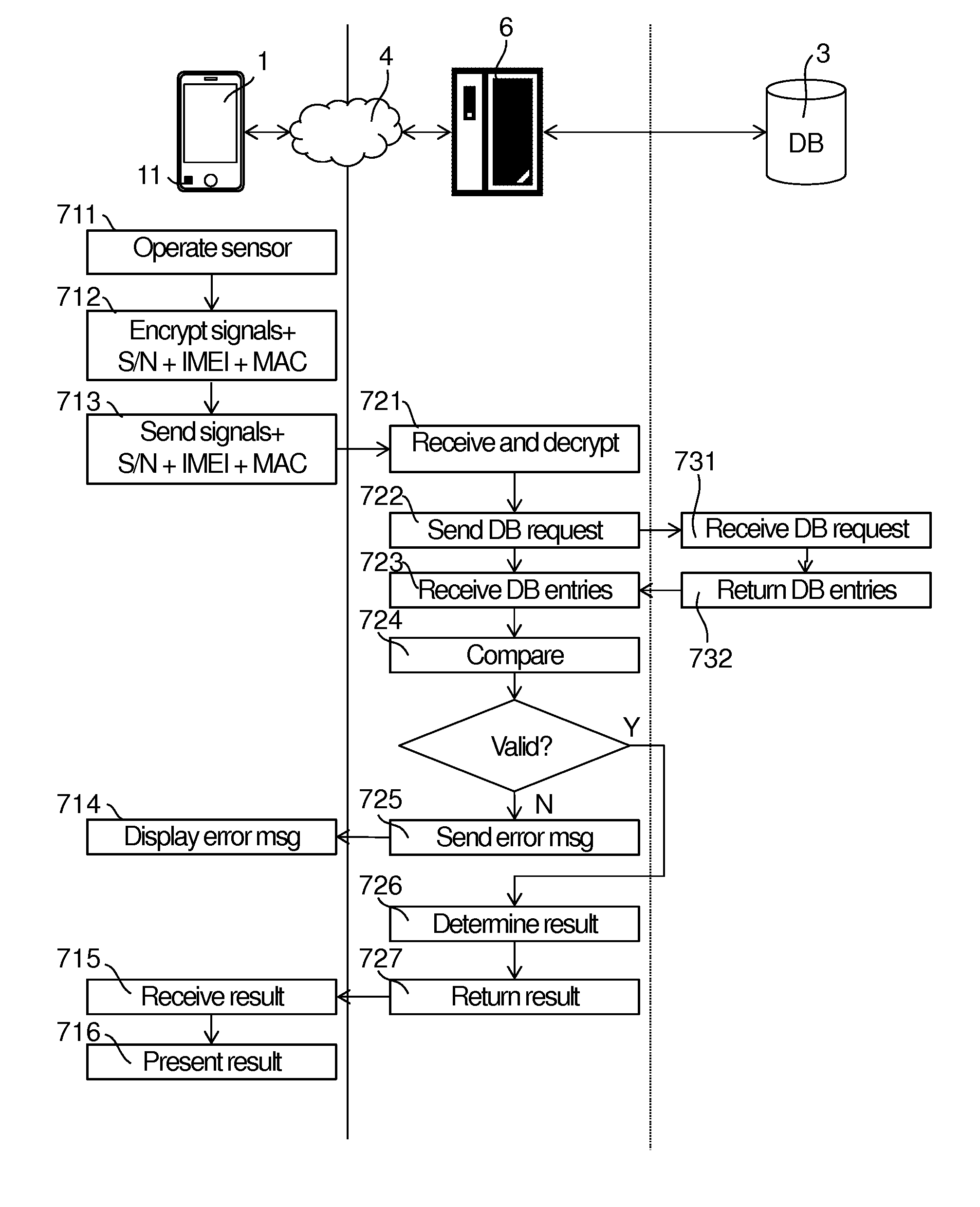Authentication of a chemical sensor in a portable electronic device
sensor technology, applied in the field of authenticating a chemical sensor in a portable electronic device, can solve the problems of difficult prediction, difficult calibration of the sensor, difficult to predict, etc., and achieve the effect of improving the reliability of results
- Summary
- Abstract
- Description
- Claims
- Application Information
AI Technical Summary
Benefits of technology
Problems solved by technology
Method used
Image
Examples
Embodiment Construction
[0045]FIG. 1 illustrates a portable electronic device in the form of a mobile phone 1. The mobile phone has a housing 10, an input / output device in the form of a touchscreen display 17 and a further input device in the form of a pushbutton 12. Below a first opening 13 in the front of the housing 10, an output device in the form of a loudspeaker is arranged. In a lower sidewall region of the housing 10, further openings 14, 15 and 16 are provided. Behind these openings, components such as a microphone, further loudspeakers and connectors are disposed. In addition, behind any of these openings sensors such as a humidity sensor, a temperature sensor and a sensor for detecting at least one chemical analyte (i.e., one or more chemical sensors) may be arranged. The chemical sensor may comprise one or more sensor cells, each sensor cell exhibiting a different sensitivity to selected analytes. The mobile phone runs an application program (app) or a routine of the operating system for operat...
PUM
 Login to View More
Login to View More Abstract
Description
Claims
Application Information
 Login to View More
Login to View More - R&D
- Intellectual Property
- Life Sciences
- Materials
- Tech Scout
- Unparalleled Data Quality
- Higher Quality Content
- 60% Fewer Hallucinations
Browse by: Latest US Patents, China's latest patents, Technical Efficacy Thesaurus, Application Domain, Technology Topic, Popular Technical Reports.
© 2025 PatSnap. All rights reserved.Legal|Privacy policy|Modern Slavery Act Transparency Statement|Sitemap|About US| Contact US: help@patsnap.com



